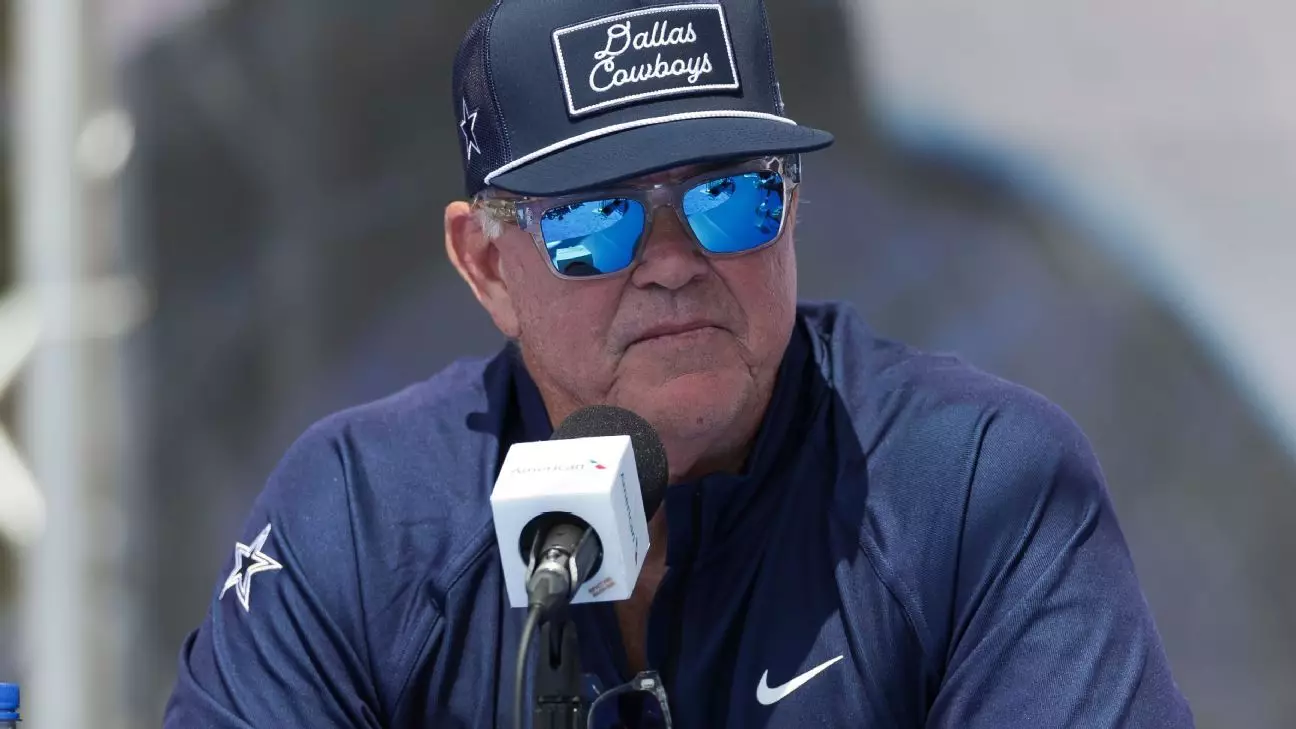The landscape of the NFL is ever-evolving, and for the Dallas Cowboys, the 2025 season marks a strategic pivot from its previous year’s full-throttle approach. This nascent strategy, encapsulated in the phrase “selectively aggressive,” as articulated by executive vice president Stephen Jones, speaks volumes about the team’s methodology in roster construction, contract negotiations, and player acquisitions. As the Cowboys prepare for the upcoming season, a thorough examination of their approach reveals not only a shift in philosophy but also the challenges and intricacies that lie ahead.
The term “selectively aggressive” resonates with a sense of caution and calculated decision-making. Unlike the prior year’s “all-in” mentality, which suggested an unrestrained attempt to amass talent, the Cowboys are now taking a more tempered approach to free agency and roster composition. Stephen Jones detailed that the team’s historical objective has always been to address key needs before the draft, allowing a focus on securing the best available talent without constraint. This more measured plan seems informed by lessons learned from previous offseasons, which had been marked by missed opportunities due to inadequate pre-draft planning.
This year’s strategy is deeply rooted in assessing both the free agency landscape and prospective draft classes. The Cowboys face the dual challenge of fulfilling immediate roster needs while maintaining the flexibility to draft players who could help elevate their performance. Such a balancing act requires far more nuanced decision-making than simply opting for star players, reflecting a sophisticated understanding of team dynamics and financial constraints.
A central component of the Cowboys’ impending decisions revolves around All-Pro pass rusher Micah Parsons. His potential contract extension looms large, with the possibility of him becoming the highest-paid defensive player in NFL history. The Cowboys have yet to initiate formal discussions, but the urgency is palpable. Parsons is currently under a fifth-year option worth approximately $21 million, a figure that could dramatically inflate should negotiations proceed successfully. The stakes are extremely high, and the Cowboys’ reputation as a franchise that values its top players is on the line.
Furthermore, the Cowboys are attempting to stabilize their roster by exploring long-term deals for several players, including defensive tackle Osa Odighizuwa. Engagements with player agents are heavy during this period, making it a critical time for not just on-field performance, but for maintaining team integrity off the field as well. The outcome of these negotiations, particularly concerning Parsons and Odighizuwa, could influence the overall direction of the franchise.
Challenges of Keeping Core Players
The Cowboys must navigate not just existing player contracts but also the potential exits of veteran players, notably defensive end DeMarcus Lawrence. As Lawrence nears the end of his tenure, his potential retirement creates uncertain ripples within the team’s structure. Jones expressed his belief that Lawrence still wishes to contribute to the Cowboys’ future, but the reality is that his contract also has significant implications on the salary cap.
With the impending retirement of stalwart Zach Martin, who may be officially designated as a cut, the Cowboys will experience shifts in both leadership and cap allocation. These decisions will inevitably shape the Cowboys’ competitive landscape in the coming season, and Jones’s remarks suggest the franchise is preparing itself for significant changes while aiming to retain pivotal talent.
Financial Flexibility and Future Outlook
The recent increase in the salary cap presents a unique opportunity for the Cowboys, providing them with the breathing room necessary to maneuver through free agency and retain essential players. Adjustments to contracts—particularly those of Dak Prescott and CeeDee Lamb—will create additional flexibility and could allow the Cowboys to become more aggressive in pursuing either their own free agents or new talent in the open market.
Stephen Jones has underscored the importance of this flexibility in enabling the Cowboys to “look at everything” available to them. The commitment to improvement reflects a long-term vision; one that recognizes the necessity of adapting to the intricacies of an ever-changing league while fortifying the Cowboys’ competitive edge.
As the 2025 season approaches, the Dallas Cowboys are redefining their strategies through a lens of selective aggression. This thoughtful plan reflects a broader understanding of football operations, emphasizing the delicate balance between immediate needs and future aspirations. The success of this endeavor depends on effective negotiations, keen drafting strategies, and the ability to cultivate existing talent, all while holding onto the franchise’s competitive spirit. The road ahead is fraught with challenges, but the Cowboys are positioning themselves to meet them head-on.


Leave a Reply